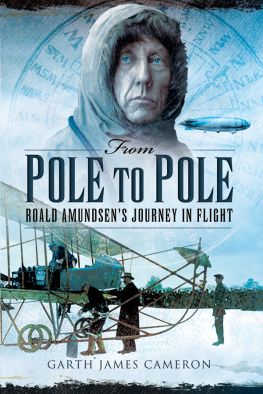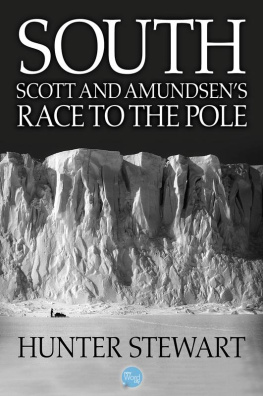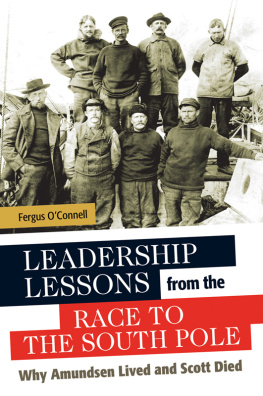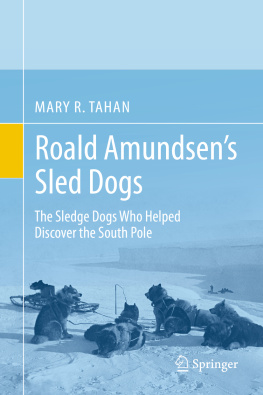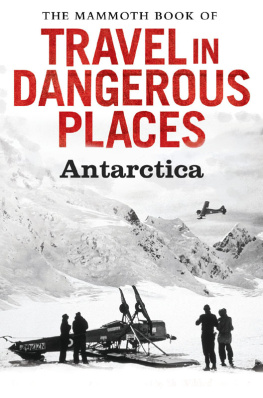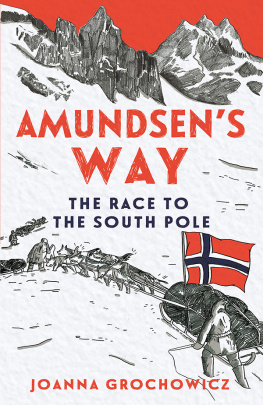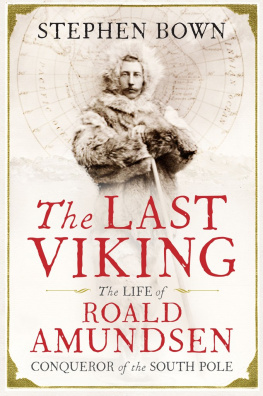This book is dedicated to
Captain Roald Engelbregt Gravning Amundsen (18721928)
Master Mariner, Arctic & Antarctic explorer, first through the Northwest Passage (19031907), first to the South Pole (December 14, 1911), First to be awarded a Federation Aeronautic Internationale (Norge) aviators certificate (September 18, 1915), third through the Northeast Passage (19181920), first to circumnavigate the globe above the Arctic Circle (19031907 & 19181920), furthest North by air (May 22, 1925), first to the North Pole (May 12, 1926), first to cross the Arctic Ocean (May 1114, 1926), innovator, author, lecturer, leader of men, statesman, citizen of an independent Norway.
Copyright 2013 Garth James Cameron
FIRST NORTH AMERICAN EDITION 2014
FIRST SKYHORSE PUBLISHING EDITION 2014
All rights to any and all materials in copyright owned by the publisher are strictly reserved by the publisher.
First published in Great Britain in 2013 by Pen & Sword Discovery, an imprint of Pen & Sword Books Ltd
All rights reserved. No part of this book may be reproduced in any manner without the express written consent of the publisher, except in the case of brief excerpts in critical reviews or articles. All inquiries should be addressed to Skyhorse Publishing, 307 West 36th Street, 11th Floor, New York, NY 10018.
Skyhorse Publishing books may be purchased in bulk at special discounts for sales promotion, corporate gifts, fund-raising, or educational purposes. Special editions can also be created to specifications. For details, contact the Special Sales Department, Skyhorse Publishing, 307 West 36th Street, 11th Floor, New York, NY 10018 or .
Skyhorse and Skyhorse Publishing are registered trademarks of Skyhorse Publishing, Inc., a Delaware corporation.
Visit our website at www.skyhorsepublishing.com.
Typeset in Ehrhardt by Mac Style
10 9 8 7 6 5 4 3 2 1
Library of Congress Cataloging-in-Publication Data is available on file.
Cover design by Jon Wilkinson
Print ISBN: 978-1-62914-699-7
Ebook ISBN: 978-1-62914-960-8
Printed in the United States of America
Contents
Introduction
Victory awaits him, who has everything in order, luck we call it. Defeat is definitely due for him who has neglected to take the necessary precautions, bad luck we call it.
Roald Amundsen 1927
I desire to offer your Majesty and the people of Norway my congratulations on the success which has attended the bold undertaking of this hardy and intrepid descendant of the Vikings.
President Calvin Coolidge 1926. Telegram to King Haakon VII
I have written this book because Amundsens aviation activities were important, interesting, and have not been examined in detail from a modern perspective. I knew something of the story and wanted to know more. It was a pleasure to get to know the subject and write about it in detail. About halfway through the book I realised that I had grown to like Amundsen very much, and my only regret is that of course I will never have the opportunity to sit down with him, have a few drinks, and talk about his life. The social, political, and technological context of Amundsens life could not be more different from that of today. In his lifetime every nation had its heroes, and it was acceptable to admire and respect people who took risks and achieved. In his lifetime aviation came into existence and developed at a rate that no one had predicted. Explorers found that they could cover in hours what had taken months or years to cover on the surface. It suddenly seemed possible to fill in the blank spots on the maps. Maps became much more accurate due to aerial photography and aerial survey. Airships seemed to be the future, aviators were seen as heroes, and governments encouraged air mindedness, but few people would do more than have a ten minute flight with a barnstormer. Newspapers published lists of the few passengers who arrived at the new airports. Air navigation was developing and very complex. A long flight required an air navigator to work from take-off to touchdown with the varied tools of his trade. The world seemed to be an exciting place with exciting possibilities due to aviation. Explorers and aviators were celebrities in a way movie stars are today. Most importantly, people had not come to take air travel or recreational aviation for granted. I admire Roald Amundsen for his professionalism, his attention to detail, his courage, his achievements, and for being an interesting character with a fair share of imperfections which make him that much more likable.
A note on names (18961928) and numbers
Place Names
The primary sources for this book use a variety of names for the same place. Usually the English language sources used anglicized, versions of the place names. The name Spitsbergen was sometimes used for the whole archipelago, including the Islands of Spitsbergen, North East Land, and many smaller islands. Sometimes Svalbard was used for the group of Islands and Spitsbergen for the main island. The modern convention is to call the whole archipelago Svalbard, and Spitsbergen refers solely to the biggest island in the group. Danes Island is Danskoya, Amsterdam Island is Amsterdamoya, Virgo Harbor is Virgohamna, Kings Bay is Kongsfjorden, New Alesund is Ny-lesund, North East Land is Nordaustlandet, and Bear Island is Bjornoya.
Norway gained its independence from Sweden on June 7, 1905.
The Norwegian capital Christiania became Kristiania in 1877, and was renamed Oslo on January 1, 1925.
Names of people
The sources often give two or more spellings of each individuals name. I have chosen the most likely one for each person and referred to him or her by that name throughout the book.
Dates, Times, and Details
The books published immediately after Amundsens 1925 and 1926 expeditions are valuable, but were rushed into print and written by a number of expedition members in parallel. This has resulted in some contradictory statements about dates, times, and flight times. I have done my best to reconcile these contradictions. Some times of day are expressed in Greenwich Mean Time (GMT) and some are local time. If a time is expressed as neither it means the sources are not precise about the type of timekeeping used.
Units of Measurement
The sources for this book use a mix of units. For continuity, where the text refers to flight planning and flights, I have converted figures in the sources to the units now used in aviation; meters (m) for runway dimensions, meters and kilometers (km) for visibility distances, feet (ft.) for elevations and altitudes, nautical miles for navigational distances, liters (L) for volumes, kilograms (kg) for weights and knots (nautical miles per hour, abbreviated as kt.) for speeds. Directions are expressed in degrees () with a circle divided into 360due east is 90, southeast is 135, south is 180, and so on.
The original figures were often round figures. I usually use the exact result of the conversions for the sake of accuracy in narrating the navigational parts of the story. This sometimes gives oddly precise figures. For example, the cruising speed of the Dornier Wal flying boat is 150 kph which converts to 81 kt. In cases where figures are rounded or approximated I use the word about in the text to indicate that the figure is imprecise.
I recommend www.metric-conversions.org to readers who wish to convert any of the numbers in the text.
In the early twentieth century, the indigenous people of the Arctic were usually called Eskimo rather than Inuit.

